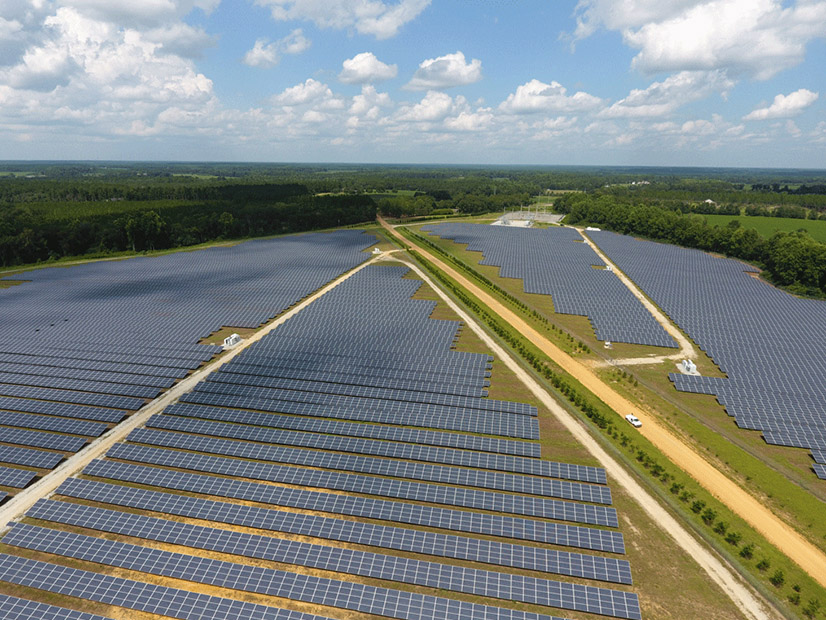More than 850 inverter-based resources that are not currently registered with NERC likely will have to be so under the ERO’s proposed IBR registration criteria, the organization told FERC in a filing Feb. 5 (RD22-4).
NERC submitted the estimate in its quarterly progress update on the registration initiative, which the ERO is required to perform under FERC’s June 2024 order approving changes to NERC’s Rules of Procedure. (See FERC Accepts NERC ROP Changes, Drops Assessment Proposal.) The ROP changes allowed the organization to register owners and operators of IBRs that currently are not required to register but that are connected to the grid and, “in the aggregate, have a material impact” on reliable operation.
They did so by creating a new category of generator owners called “Category 2 GOs,” comprising entities that own or maintain IBRs that “either have or contribute to an aggregate nameplate capacity of greater than or equal to 20 MVA, connected through a system designed primarily for delivering such capacity to a common point of connection at a voltage greater than or equal to 60 kV.”
According to NERC’s filing, there are 863 IBRs meeting the Category 2 criteria with a total nameplate capacity of 38,785 MVA, distributed as follows among the regional entities:
-
- MRO — 149 IBRs with a total nameplate capacity of 6,614 MVA.
-
- NPCC — 75 IBRs; capacity of 2,422 MVA.
-
- ReliabilityFirst — 100 IBRs; capacity of 4,194 MVA.
-
- SERC — 175 IBRs; capacity of 10,473 MVA.
-
- Texas RE — 41 IBRs; capacity of 2,167 MVA.
-
- WECC — 323 IBRs; capacity of 12,915 MVA.
NERC developed the estimate after issuing a request for information to balancing authorities and transmission owners on July 9, 2024, for “relevant information on those entities within their footprints that could meet the … registry criteria.” The estimates for both the number of IBRs and their capacity were calculated as of Jan. 24 and may change as more information is gathered.
In addition, the ERO said the “numbers do not necessarily reflect the total number of GOs or GOPs that will be registered based on the Category 2 criteria, as the Functional Entity assignment will be determined once the ERO Enterprise receives more information about the entities.” NERC said it will provide updated numbers in future quarterly reports.
NERC is nearing the end of the second year of its IBR registration work plan, which FERC approved in May 2023. (See FERC Approves NERC’s IBR Work Plan.) The plan laid out a three-year process for completing the registration: revise the ROP to create an appropriate registered entity function within 12 months of the plan’s approval; identify candidates for registration within 24 months; and register appropriate entities within 36 months.
The ERO said it already has “initiated communications with newly identified entities that may be candidates for registration as Category 2 GO/GOPs.” Training for the Centralized Organization Registration ERO Systems (CORES) will be provided to newly registered entities in months 25 and 26 of the work plan, or June and July 2025. NERC plans to complete registration by May 2026.

